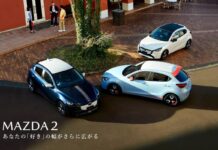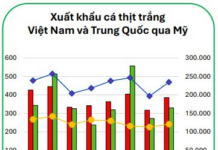The construction project of the elevated road along National Highway 51, from the Vung Tau intersection to the Vo Nguyen Giap road intersection with the Bien Hoa – Vung Tau expressway, is expected to alleviate traffic congestion on the route with a high volume of vehicles passing through Dong Nai province. It will also contribute to the improvement and beautification of the urban space.
Dong Nai People’s Committee recently had a working session with representatives of the investor, Ho Chi Minh City Infrastructure Investment Joint Stock Company (CII), on selecting a financial plan for the implementation of the elevated road project along National Highway 51.
2 capital usage plans
According to the Dong Nai Department of Finance, CII – the representative of the investor consortium proposing the project, has submitted for appraisal the pre-feasibility study report of the project. The consortium proposed two financial plans for implementation.

Elevated road project along National Highway 51 from Vung Tau intersection to the intersection of Vo Nguyen Giap road with Bien Hoa – Vung Tau expressway
Plan 1, the project has a total investment of more than VND 16,100 billion with a capital structure including more than VND 4,800 billion of state capital (accounting for more than 30% of the total investment), VND 11,200 billion in BOT capital (including loan interest) (accounting for nearly 70% of the total investment) and a project capital recovery time of 25 years and 3 months.
With this plan, the investor will collect fees for the 6 lanes of the elevated road along National Highway 51 and the elevated lanes at the Vung Tau intersection.
The fee at the Vung Tau intersection is expected to be about 20% of the fee on the elevated road along National Highway 51. For vehicles entering and exiting the intersection in the direction of National Highway 51, only the fee for the elevated road will be applied, without additional fees at the intersection.
Plan 2, the total investment of the project is nearly VND 16,600 billion, the entire capital source for the project is BOT capital (including loan interest), and the time for collecting fees to recover capital is 26 years and 9 months.
The investor will collect fees to recover capital for the 6 lanes of the elevated road along National Highway 51 as well as at the Vung Tau intersection, including both the elevated and ground-level sections.
The fee at the Vung Tau intersection is expected to be about 20% of the fee on the elevated road. In case vehicles enter and exit the intersection in the direction of National Highway 51 and travel on the elevated section, only the fee for the elevated road along National Highway 51 will be applied, without additional fees at the intersection.
Which plan is feasible?
At the working session with the Dong Nai People’s Committee, CII stated that out of the two financial plans, the investor consortium proposing the project recommended choosing Plan 2.
The Dong Nai Department of Finance assessed that each plan has its own advantages and disadvantages.
With Plan 1, state capital will be used for site clearance, so the BOT project for construction can be carried out simultaneously, thus speeding up the project progress. Meanwhile, with Plan 2, a new investor must be selected to implement the project, including site clearance.
Dong Nai Department of Finance argued that in Plan 1, although the state capital participating in the project is more than VND 4,800 billion, the capital recovery time is only 18 months shorter than that of Plan 2. With Plan 2, there will be no pressure on the state budget, and road users will still have the choice to pay the fee to use the elevated road or not to pay any fee when traveling on the existing National Highway 51.
The Dong Nai Provincial Project Management Board also argued that with the state capital of more than VND 4,800 billion, if the capital recovery time is only 18 months shorter as in Plan 1, then Plan 2 will be more advantageous.
The Vice Chairman of the Dong Nai People’s Committee assigned the Department of Construction to clarify the economic, social, and urban aesthetic efficiency based on the investor’s project proposal and report to the Party Committee and People’s Committee of Dong Nai province.
The elevated road along National Highway 51 has a total route length of about 5.5km, of which the length of the viaduct is more than 4.6km, investing in the synchronous construction of Vung Tau, Gate 11, the intersection with Bien Hoa – Vung Tau expressway, and Huong Lo 2 intersections…
The implementation of the elevated road along National Highway 51 is expected to reduce traffic congestion, especially at important intersections such as Vung Tau and Gate 11, while promoting socio-economic development in the area.
Crafting a Captivating Headline: “Racing to Complete the Road Linking the Port to the Industrial Zone”
The construction of Route 991B, connecting National Highway 51 to the Cai Mep port’s downstream area, is being expedited for completion in 2025. This strategic infrastructure project is expected to unlock a new development corridor for the nation’s logistics industry, facilitating trade and boosting economic growth.
The Sky’s the Limit: Long Thanh Airport Property Soars
The real estate market in Nhon Trach and Long Thanh (Dong Nai) and Ba Ria-Vung Tau is buzzing with positive signals as the year comes to a close. The rapid progress of large-scale transportation infrastructure projects in these areas is a significant contributing factor to this positive momentum.













































